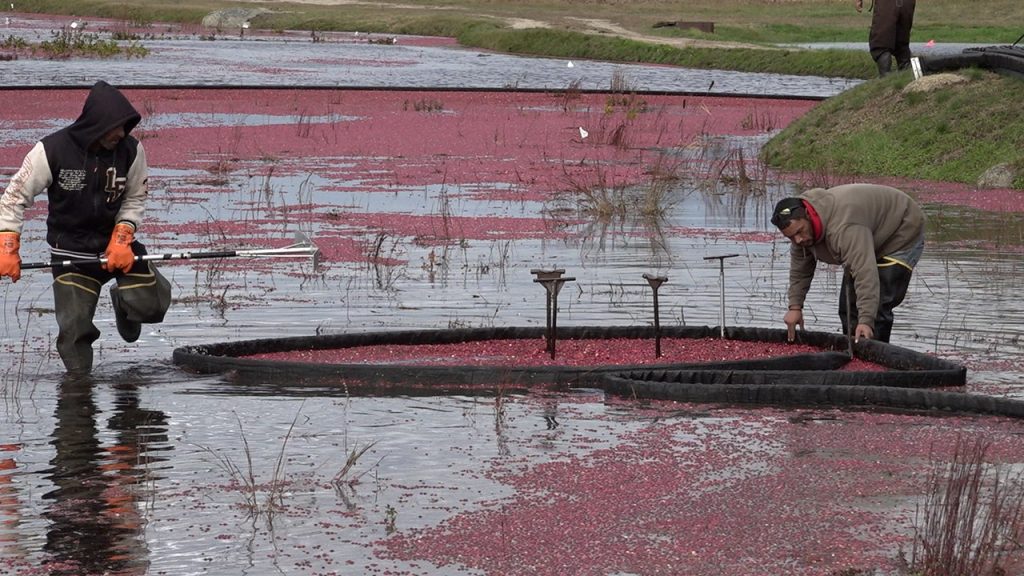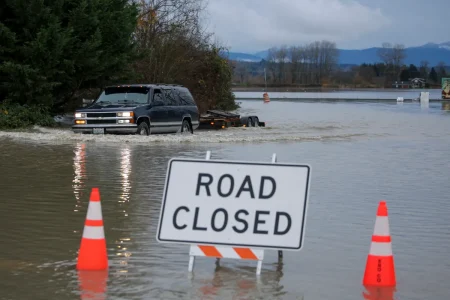Massachusetts Cranberry Farmers Navigate Economic Pressures and Environmental Change
In the scenic southeastern corner of Massachusetts, where crimson berries glisten under autumn skies, cranberry farmers are experiencing their busiest season of the year. The Bay State proudly holds the position of second-largest cranberry producer in the United States, trailing only Wisconsin in output. According to Karen Cahill, deputy executive director of the Cape Cod Cranberry Growers’ Association, Massachusetts boasts “an incredibly robust cranberry industry” that contributes significantly to the state’s economy. A 2023 economic study revealed the industry’s $1.7 billion contribution to the state’s economy while supporting nearly 6,400 jobs in the region. These numbers reflect the deep-rooted importance of cranberry farming to both the cultural identity and economic health of Massachusetts communities.
Among the dedicated farmers carrying on this tradition is Jarrod Rhodes, a fourth-generation cranberry farmer in Carver, Massachusetts. His family farm, Edgewood Bogs LLC, established in the early 1940s, produces an impressive 50,000 barrels—equivalent to 5 million pounds—of cranberries annually. In 2009, the Rhodes family expanded their operation by launching Cape Cod Select, where they process a portion of their harvest for the frozen retail market, allowing them greater control over their product’s journey from bog to consumer. However, despite this impressive output and vertical integration, Rhodes faces mounting challenges that threaten the sustainability of his family’s legacy. Rising operational costs and increasingly unpredictable weather patterns—likely influenced by climate change—are creating significant pressure on Massachusetts cranberry farmers like Rhodes. “It kind of all adds up,” Rhodes explains, “and it becomes a lot more expensive to grow here versus Wisconsin or Canada.”
The challenges Massachusetts cranberry farmers face aren’t simply about weather variations or isolated cost increases—they reflect broader structural and economic realities. Cahill notes that “Massachusetts is an expensive place to do business in general,” with costs driven higher by expensive labor, utilities, and real estate. Another significant factor is the difference in scale between Massachusetts and Wisconsin operations. Wisconsin cranberry farms operate on more than double the acreage of their Massachusetts counterparts, and as Cahill points out, “doing anything at scale tends to make it less expensive.” This economy of scale advantage creates a competitive imbalance that Massachusetts growers must overcome through innovation, efficiency, or—as some are choosing—strategic downsizing of operations.
Faced with these economic realities, Rhodes made a pragmatic decision to participate in a state program that allows farmers to retire and restore older, less productive bogs to their natural state. When assessing a particular 30-acre section of his property, Rhodes recognized that “the property was in distress and it needed to be rebuilt.” Rather than investing substantial capital in rejuvenating this struggling acreage, he turned to the Massachusetts Division of Ecological Restoration (DER), which operates a specialized cranberry bog program converting retired bogs back to native wetlands. Over the past decade, this program has successfully restored multiple unprofitable bogs, including the Eel River Headwaters Restoration—a project where Atlantic white cedar has rebounded, wetlands now flourish on former farm surfaces, and river herring have returned upstream. This approach represents a win-win solution: economically challenged farmers receive financial support while contributing to environmental restoration.
The restoration process Rhodes engaged in is funded through state and federal grants, creating what DER describes as a “green exit strategy.” Through this program, farming families like the Rhodes receive compensation through restoration grants and conservation easements to convert their bogs to wetlands. Krista Haas of DER explains that before any construction begins, the land must be legally protected through measures such as deed restrictions that prohibit future development. “Conservation easements are often done through the USDA Natural Resources Conservation Service (NRCS) Wetland Reserve Easement (WRE) Program,” Haas notes. For the Rhodes family, this meant an opportunity to farm less acreage while strategically investing proceeds from the program into higher-yielding fields—essentially, doing more with less. Their particular wetland restoration project is scheduled for completion in spring 2026, contributing to DER executive director Beth Lambert’s ambitious goal of restoring 1,000 acres over the next 10 to 15 years.
As the cranberry industry in Massachusetts continues to evolve, Rhodes observes that many of his fellow growers are considering similar paths. Some aging farmers are approaching retirement with younger generations showing less interest in continuing the family business—a common challenge across many agricultural sectors. This generational shift, combined with economic pressures and environmental considerations, is reshaping the landscape of Massachusetts cranberry farming both literally and figuratively. The story of Jarrod Rhodes and his family’s farm illustrates how cranberry growers are adapting to changing circumstances through innovative approaches that balance economic sustainability with environmental stewardship. As these transitions continue, the Massachusetts cranberry industry may become smaller in acreage but potentially more efficient and environmentally integrated—preserving both a cherished agricultural tradition and the natural ecosystems that have always surrounded these iconic crimson bogs.















